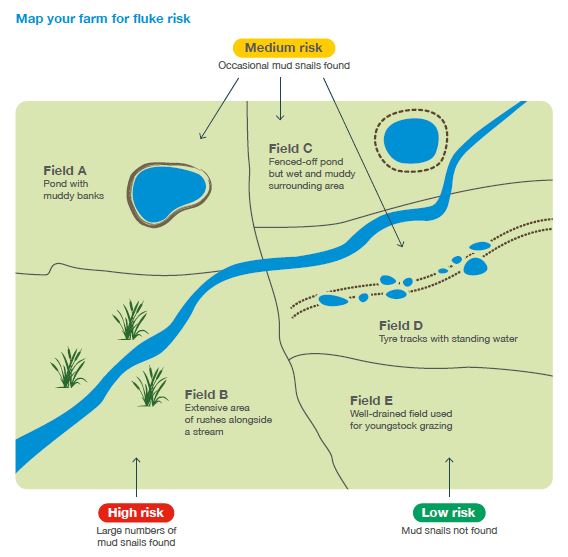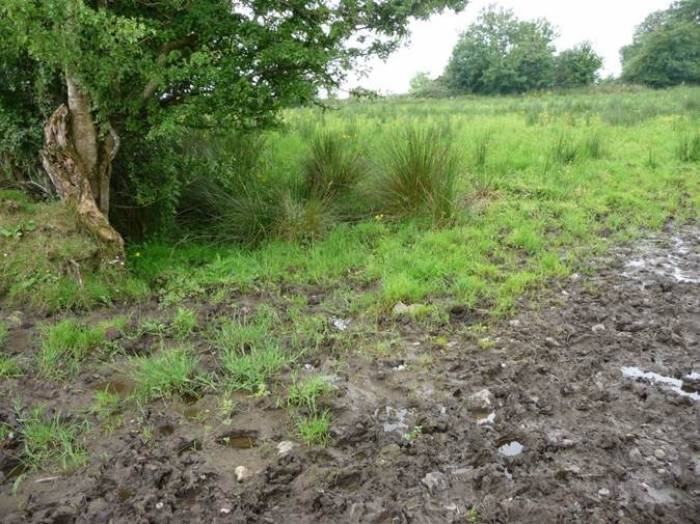Because the mud snail is critical to the liver fluke lifecycle , identification and exclusion of snail habitats from livestock offers some measure of control – but is very difficult to do in reality. For example, drainage eliminates the snail and offers an effective means of control, but does not sit well with environmental schemes to protect wetland areas.
Practical options to consider if appropriate for your farm
This useful guide to mapping your farm for fluke risk is available on page 23 of the Liver fluke control in grazing livestock booklet compiled by the levy bodies.

Another management consideration, in addition to grazing management, is managing the presence/type of fluke on your farm. If you have mud snails on your farm but no fluke, you do not want to introduce the parasite. If you have mud snails and fluke but not treatment-resistant fluke, you do not want to introduce resistant parasites. Therefore, quarantine treatment and management for incoming stock is vital.
